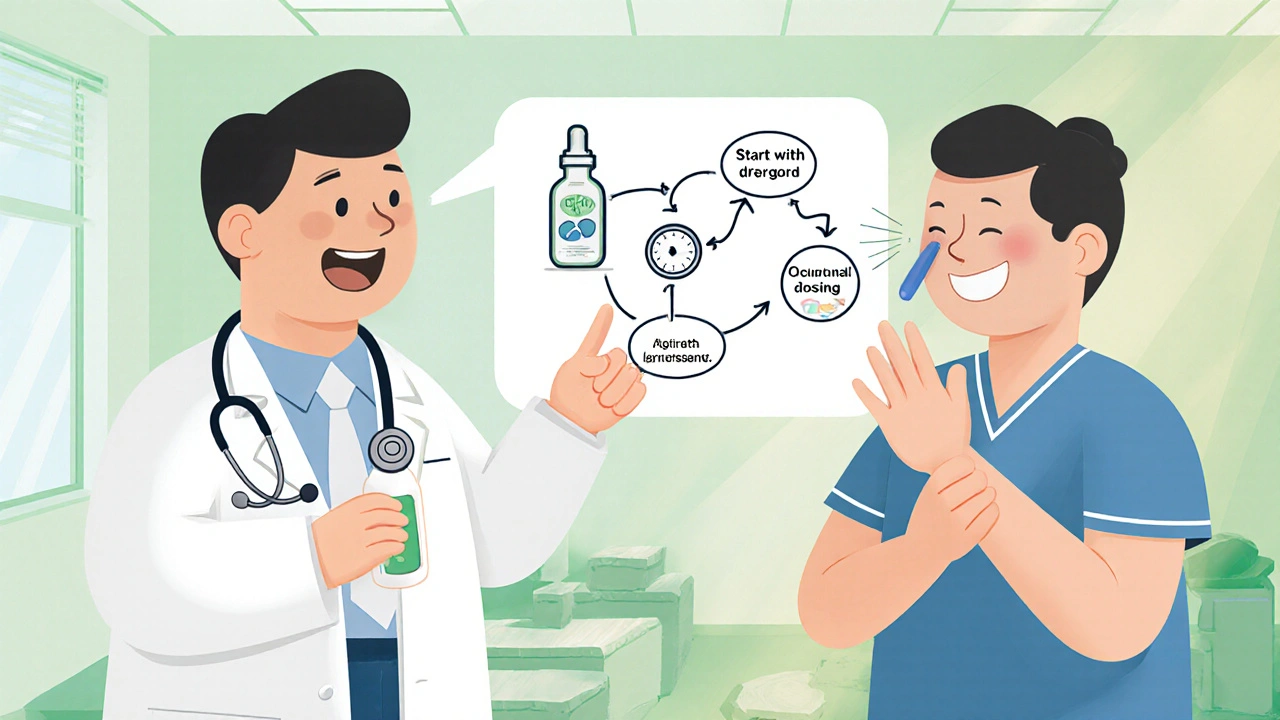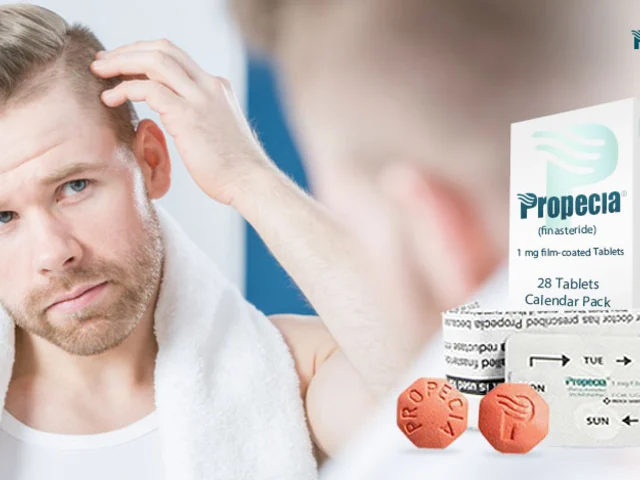Allergy Symptom Checker
This tool helps you determine the most effective allergy medication for your symptoms based on clinical evidence. Select your symptoms to see which treatment works best for you.
What are your primary symptoms?
Your Recommendation
Why This Works Best
Action Timeline
Key Takeaways
- Intranasal corticosteroids (INS) deliver superior relief for nasal congestion, runny nose, and sneezing, even when taken "as‑needed".
- Antihistamines excel at controlling eye itch and watery eyes, and they work faster for sudden symptom flare‑ups.
- Real‑world adherence favors occasional dosing; INS still outperforms antihistamines in that scenario.
- Cost‑effectiveness, safety profile, and patient education tip the balance toward INS as first‑line therapy for most allergic rhinitis patients.
- Combination therapy-INS plus an intranasal antihistamine or oral antihistamine for eye symptoms-offers the most comprehensive control.
Allergic rhinitis affects roughly one‑in‑five people and brings sneezing, a runny nose, congestion, and itchy eyes. When the season changes, many of us reach for the first bottle we see-usually an oral antihistamine. But a growing body of research shows that intranasal corticosteroids may give better relief, especially when we use them only when symptoms appear. This guide breaks down how each drug class works, what the evidence says about effectiveness, when to take them, and how to choose the right approach for your own allergy profile.
How the Two Classes Work
Intranasal corticosteroids are a type of local anti‑inflammatory medication that reduces swelling, mucus production, and immune cell infiltration in the nasal lining. They achieve this by binding to glucocorticoid receptors, shutting down the cascade that releases histamine, leukotrienes, and cytokines.
Antihistamines are H1‑receptor antagonists that block histamine from attaching to its receptor on nerve endings. This stops the itching and watery discharge that histamine triggers, but they do not address the underlying inflammation that causes congestion.
The difference is like turning off a faucet (antihistamines) versus cleaning the pipe (corticosteroids). Antihistamines stop one symptom pathway; corticosteroids calm the whole inflammatory storm.
Clinical Efficacy: What the Numbers Show
Multiple meta‑analyses spanning two decades converge on the same conclusion: INS win on most nasal symptoms. A 1999 meta‑analysis of 16 RCTs (2,267 patients) reported significantly better scores for blockage, itching, discharge, and sneezing with INS compared to oral antihistamines. The only exception was one study that favored antihistamines for sneezing alone.
More recent work reinforces the finding. The 2017 systematic review of 28 trials (Juel‑Berg et al.) declared INS "superior to oral antihistamines in improving nasal symptoms and quality of life" (cited 93 times). Objective measures-eosinophil counts and eosinophil cationic protein (ECP) levels-also fell faster with INS (Kaszuba et al., 2001).
Eye symptoms are a gray area. Walling’s 1999 analysis found no significant difference in ocular relief, giving antihistamines a niche advantage for itchy, watery eyes.
Timing and Real‑World Use
Guidelines traditionally recommend daily INS for moderate‑to‑severe disease, while antihistamines are deemed fine for occasional relief. Yet real‑world data tell a different story. Most patients don’t stick to daily dosing; they use meds only when symptoms flare.
Robert Naclerio’s 2001 study at the University of Chicago used an "as‑needed" design and still found INS superior to antihistamines across sneezing, runny nose, and congestion over four weeks. The same study noted that INS were actually cheaper than non‑sedating antihistamines, contradicting the myth that steroids are always pricier.
Onset of action also matters. Antihistamines often start working within 30 minutes, making them handy for sudden eye irritation. INS may need 12-24 hours to reach full effect, but even a single dose can begin reducing swelling within a few hours.

Cost, Safety, and Patient Concerns
Safety profiles are reassuring for both classes when used as directed. Long‑term INS use (up to five years) has not shown serious systemic side effects, and local irritation is the most common complaint. Antihistamines can cause sedation (first‑generation agents) or dry mouth (second‑generation agents), but serious risks are rare.
Cost analyses consistently favor INS as the more cost‑effective first‑line option. Naclerio’s 2001 paper highlighted that the average price per dose of a generic INS spray was lower than that of a brand‑name non‑sedating antihistamine, while delivering better symptom control.
Patient education is crucial. Many fear “steroids,” assuming they’ll cause weight gain or hormonal issues. Clarifying that INS act locally and have minimal systemic absorption helps improve adherence.
When to Choose Which: A Practical Decision Tree
- Predominant nasal congestion and discharge? Start with INS. Use a once‑daily spray; if symptoms are mild, as‑needed dosing still works.
- Frequent eye itching or watery eyes? Add an oral or intranasal antihistamine for targeted relief.
- Need rapid relief for a sudden flare? Take a non‑sedating antihistamine (e.g., cetirizine) while the INS builds up its anti‑inflammatory effect.
- History of steroid sensitivity or poor technique? Consider a higher‑dose antihistamine regimen and a short trial of INS with proper instruction.
For many patients, the best outcome comes from a combination: daily INS as the backbone plus an antihistamine on days with prominent eye symptoms.
Combination Therapy Insights
A 2020 study by Du et al. showed that adding an intranasal antihistamine (azelastine) to INS improved symptom scores more than adding an oral antihistamine. The synergy arises because the antihistamine blocks histamine while the steroid calms the broader inflammation.
When layering therapies, keep the total daily dose of each agent within recommended limits. For example, a standard INS (fluticasone propionate 50 µg per spray, two sprays per nostril) paired with one daily dose of an oral antihistamine is safe for most adults.

Practical Tips for Getting the Most Out of Your Meds
- Correct spray technique: Tilt head slightly forward, close the opposite nostril, inhale gently while spraying, then avoid blowing your nose for 10 minutes.
- Consistency matters: Even with as‑needed use, try to administer the spray at the same time of day when possible.
- Watch for local irritation: If you notice burning, rinse with saline before the next dose.
- Combine wisely: Use an antihistamine for eyes only when needed; don’t double‑dose the same class.
- Check expiration dates: Sprays lose potency after a year, especially if not stored upright.
Bottom Line: What the Evidence Tells Us
If you’re battling the runny nose, stuffiness, and sneezing that come with seasonal allergies, INS should be your first stop. They cut inflammation at the source, work better than antihistamines even when you only spray when symptoms appear, and cost less in the long run. Antihistamines still have a role-fast relief for eye itching, a backup for sudden flare‑ups, or as an add‑on when INS alone isn’t enough.
Talk to your pharmacist or doctor about starting an INS, learning the proper spray technique, and whether an antihistamine supplement would round out your symptom control. With the right mix, you’ll spend less time wiping your nose and more time enjoying the outdoors.
| Aspect | Intranasal Corticosteroids | Antihistamines (Oral) |
|---|---|---|
| Efficacy for nasal congestion | High - reduces swelling & mucus | Low - does not target inflammation |
| Eye symptom relief | Modest | Strong - blocks histamine in eyes |
| Onset of action | 12-24 hrs (partial relief within few hrs) | 30 min (rapid) |
| Typical dosing pattern | Once daily or as‑needed | As‑needed or daily |
| Cost per dose (generic) | ~$0.10 | ~$0.12 |
| Safety concerns | Local irritation, rare systemic effects | Sedation (first‑gen), dry mouth (2nd‑gen) |
Frequently Asked Questions
Can I use an intranasal corticosteroid for a cold?
INS are designed for allergic inflammation, not viral infection. They may reduce congestion but won’t shorten a cold. Use them only if you have confirmed allergic rhinitis.
Do intranasal steroids cause weight gain?
No. The amount absorbed systemically is tiny, so they don’t affect metabolism or cause the weight changes seen with oral steroids.
How long should I wait before switching from an antihistamine to a steroid?
If antihistamines aren’t controlling nasal blockage after a week of regular use, discuss starting an INS with your clinician. You can even combine them during the transition.
Is it safe to use both an INS and an oral antihistamine together?
Yes, they act on different pathways. Many guidelines recommend a daily INS plus an as‑needed oral antihistamine for eye symptoms.
What’s the best way to learn the correct spray technique?
Tilt your head forward a few degrees, close the opposite nostril, insert the tip just inside the nostril, breathe in gently while pressing the pump, then avoid blowing your nose for at least 10 minutes.







Comments(15)